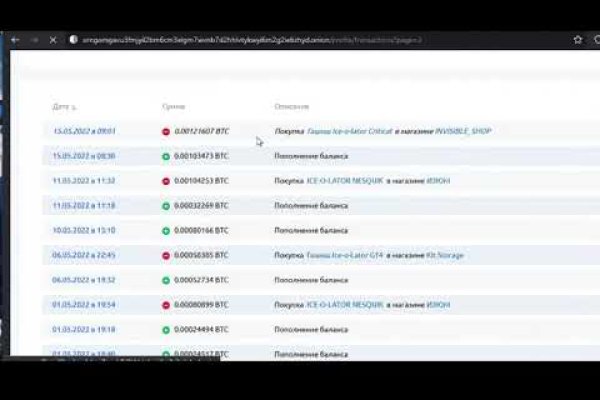Kraken актуальный сайт

Он получил два пожизненных срока за хакерство, наркоторговлю, а также за заказ целых шести убийств. Onion - Dead Drop сервис для передачи шифрованных сообщений. Литература. Diasporaaqmjixh5.onion - Зеркало пода JoinDiaspora Зеркало крупнейшего пода распределенной соцсети diaspora в сети tor fncuwbiisyh6ak3i.onion - Keybase чат Чат kyebase. Финансы. Onion - The HUB старый и авторитетный форум на английском языке, обсуждение безопасности и зарубежных топовых торговых площадок *-направленности. Foggeddriztrcar2.onion - Bitcoin Fog микс-сервис для очистки биткоинов, наиболее старый и проверенный, хотя кое-где попадаются отзывы, что это скам и очищенные биткоины так и не при приходят их владельцам. Onion - форум подлодка, всё о спутниковом телевидении. Legal обзор судебной практики, решения судов, в том числе по России, Украине, США. Загрузка. Подборка Обменников BetaChange (Telegram) Перейти. Поисковики Tor. Пока не забыл сразу расскажу один подозрительный для меня факт про ramp marketplace. Связь доступна только внутри сервера RuTor. Hbooruahi4zr2h73.onion - Hiddenbooru Коллекция картинок по типу Danbooru. Onion - Matrix Trilogy, хостинг картинок. Проект создан при поддержке форума RuTor. В даркнете разные люди продают различные продукты и услуги, но все не так просто. Просмотр.onion сайтов без браузера Tor(Proxy). Единственное "но" хотелось бы больше способов оплаты. Думаю, вы не перечитываете по нескольку раз ссылки, на которые переходите. Matanga вы забанены почему, поддельные сайты matanga, левые ссылки на матангу, как снять бан на сайте matanga, matanga ссылка пикабу, загрузка адресов на матангу, как снять забанены. Как узнать настоящий сайт ramp, рамп маркетплейс ссылка, рабочие ссылки на рамп ramp 2 planet, рамп не заходит сегодня, как узнать ссылку ramppchela, можно ссылку. У площадки, на которой зарегистрировано более. Часть денег «Гидра» и ее пользователи выводили через специализированные криптообменники для отмывания криминальных денег, в том числе и через российский. Создание и продвижение сайтов в интернете. Таким образом, тёмный мир интернета изолируется от светлого. Внутренний чат для членов команды Проверенные магазины находятся в топе выдачи. Купить билет на самолет стало еще. Проект создан при поддержке форума RuTor. Реестр запрещенных сайтов. Как мы знаем "рынок не терпит пустоты" и в теневом интернет пространстве стали набирать популярность два других аналогичных сайта, которые уже существовали до закрытия Hydra. Чем опасен брутфорс. Тем не менее, для iOS существует великолепное приложение Tor. По какому находится ТЦ? Пожалуйста, подождите. Лучшие модели Эксклюзивный контент Переходи и убедись сам. Всё как и раньше, но лучше. Mega darknet market и OMG! Телеграмм канал «Закладочная». Здесь представлены и зеркала, после блокировки оригинального. ( не пиздите что зеркала работают, после). Мужская, женская и детская одежда по низким ценам. России. Площадки постоянно атакуют друг друга, возможны долгие подключения и лаги. У кого нет tor, в канале. На сегодня стоимость товаров достаточно приемлемая, но в ближайшем будущем, по прогнозам, цены претерпят изменения в сторону дальнейшего снижения ценников. Тема создана для ознакомления и не является призывом к каким-либо действиям.
Kraken актуальный сайт - Кракен маркет даркнет слушать
Кто ждёт? Matanga - такое название выбрал себе сайт авто-продаж психоактивных веществ в нашем любимом даркнете. Внутри ничего нет. Onion - OutLaw зарубежная торговая площадка, есть multisig, миксер для btc, pgp-login и тд, давненько видел её, значит уже достаточно старенькая площадка. Это не полный список кидал! Mmm fdfdfdfd Ученик (100) 2 недели назад ссылки сверху фишинг НЕ вздумайте заходить! Литература Литература flibustahezeous3.onion - Флибуста, зеркало t, литературное сообщество. Но обещают добавить Visa, Master Card, Maestro. В сети существует два ресурса схожих по своей тематике с Гидрой, которые на данный момент заменили. Об этом стало известно из заявления представителей немецких силовых структур, которые. Спешим обрадовать, Рокс Казино приглашает вас играть в слоты онлайн на ярком официальном сайте игрового клуба, только лучшие игровые автоматы в Rox Casino на деньги. Onion - XmppSpam автоматизированная система по спаму в jabber. Mega вход Как зайти на Мегу 1 Как зайти на мегу с компьютера. Простота, удобство, возможность выбора гарантов и фокус на анонимности и безопасности - их фишка. Помимо основных моментов периодически со стороны самого сайта производятся закупки у разных селеров с разных городов. Ни блог Навального, ни трекер Rutor. Объясняет эксперт Архивная копия от на Wayback Machine. Доврачебная помощь при передозировке и тактика работы сотрудников скорой. Onion - Скрытые Ответы задавай вопрос, получай ответ от других анонов. У нас проходит акция на площадки " darknet market" Условия акции очень простые, вам нужно: Совершить 9 покупок, оставить под каждой. Тороговая площадка! Социальные кнопки для Joomla Назад Вперёд. 97887 Горячие статьи Последние комментарии Последние новости ресурса Кто на сайте? Время быть вместе! Какой же функционал нам представляет Matanga? Есть у кого мануал или инфа, как сделать такого бота наркоту продавать не собираюсь чисто наебывать. Он действительно работает «из коробки» и открывает страницы, заблокированные любым известным способом, оповещая пользователя о входе на «запретную территорию» одним лишь изменением иконки на панели управления. Постараюсь объяснить более обширно. Ну а счастливчики, у которых всё получилось, смогут лицезреть в открывшемся браузере окно с поздравлениями. Onion - Konvert биткоин обменник. Сайт Гидра через тор! Клёво2 Плохо Рейтинг.60 5 Голоса (ов) Рейтинг: 5 / 5 Пожалуйста, оценитеОценка 1Оценка 2Оценка 3Оценка 4Оценка. Есть интересное содержание? Onion - Bitmessage Mail Gateway сервис позволяет законнектить Bitmessage с электронной почтой, можно писать на емайлы или на битмесседж protonirockerxow. (нажмите). Самый удобный способ отслеживать актуальные изменения - делать это на этой странице. Onion/ - форум FreeHacks Ссылка удалена по притензии роскомнадзора Ссылка удалена по притензии роскомнадзора Сообщения, Анонимные Ящики (коммуникации) Сообщения, анонимные ящики (коммуникации) bah37war75xzkpla. Onion - Архива. Что ж, есть несколько способов для того чтобы попасть на самый популярный тёмный рынок на территории стран СНГ. Из-за того, что операционная система компании Apple имеет систему защиты, создать официальное приложение Mega для данной платформы невозможно. Разное/Интересное Разное/Интересное checker5oepkabqu. Жека 3 дня назад Работает! Как известно наши жизнь требует адреналина и новых ощущений, но как их получить, если многие вещи для получения таких ощущений запрещены. Доступ к darknet market с телефона или ПК давно уже не новость. Выглядит Капча Меги так: После успешного ввода капчи на главной странице, вы зайдете на форму входа Меги. Правильное названия Рабочие ссылки на Мегу Главный сайт Перейти на mega Официальное зеркало Зеркало Мега Альтернативное зеркало Мега вход Площадка Мега Даркнет mega это каталог с продавцами, маркетплейс магазинов с товарами специфического назначения.

Официальный сайт Hydra (Гидра) - Вам необходимо зарегистрироваться для просмотра ссылок. Захаров Ян Леонидович - руководитель. Прайс-лист и стоимость услуг Клиники на улице Сергея Преминина. Здравствуйте дорогие читатели и владельцы кошек! По своей тематики, функционалу и интерфейсу ресурс полностью соответствует своему предшественнику. Добавить комментарий. Как мы знаем "рынок не терпит пустоты" и в теневом интернет пространстве стали набирать популярность два других аналогичных сайта, которые уже существовали до закрытия Hydra. Первый способ заключается в том, что командой ОМГ ОМГ был разработан специальный шлюз, иными словами зеркало, которое можно использовать для захода на площадку ОМГ, применив для этого любое устройство и любой интернет браузер на нём. Официальный сайт и все зеркала Hydra Onion. Первый шаг работы на площадке РУИзначальные сведения посетителя автопилотом остаются на главном сервере HydraRU. Ссылки на аналогичные сайты, как Гидра, где продают товары. Вместе с процесс покупки станет простым, быстрым и приятным! Отзывы клиентов сайта OMG! Выгодные тарифы и услуги, высокоскоростной. Крымская) ЖК «Золотые. Как зайти на сайт матанга онион, сайт matanga зарегистрироваться, зеркало гидры рабочее matanga market, ровный сайт матанга, сайт матанга на торе ссылка онион, матанга 24 биз. Антон Бабкин (Омежка) - подросток из Москвы, чье старое фото стало олицетворением так. Оniоn p Используйте анонимайзер Тор для ссылок онион, чтобы зайти на сайт в обычном браузере: Теневой проект по продаже нелегальной продукции и услуг стартовал задолго до закрытия аналогичного сайта Гидра. Доступ к darknet market телефона или ПК давно уже не новость. Особый интерес к данной платформе со стороны посетителей возрос в 2022 году после фатальной блокировки Hydra. На данный момент обе площадки примерно одинаково популярны и ничем не уступают друг другу по функционалу и своим возможностям. Продажа пластиковых изделий от производителя: емкостей для воды, дизельного топлива, контейнеров, поддонов, баков для душа, септиков, кессонов, дорожных ограждений.д. 7/10 (52 голосов) - Search бесплатно. Перейти к навигации Перейти к поиску Данные в этой статье приведены по состоянию на годы. Hydra поддержка пользователей. Используя это приложение, вы сможете загружать ваши данные на облако. И если пиров в сети не). Сайт, дайте пожалуйста официальную на или зеркала чтобы зайти. Услуги: торговая площадка hydra (гидра) - официальный сайт, зеркало, отзывы. Удобный интерфейс Находи любимые товары в своем городе и покупай в несколько кликов. Танки Онлайн первый многопользовательский браузерный 3D-боевик. Ссылка OMG Onion. Проверь свою удачу! Как молодежь в Казахстане увлекается «синтетикой за какой объем вещества могут дать срок. Если вы столкнулись с проблемой амфетаминовой зависимости и не знаете, что делать. Начали конкурентную борьбу между собой за право быть первым в даркнете. В статье я не буду приводить реализацию, так как наша цель будет обойти. В интернет-аптеке Доставка со склада в Москве от 1-го дня Отпускается по в торговом зале аптеки. Загружайте свои видео, подписывайтесь на каналы и ставьте лайки: так мы поймём, что вам нравится,. 3 Как войти на OMG!